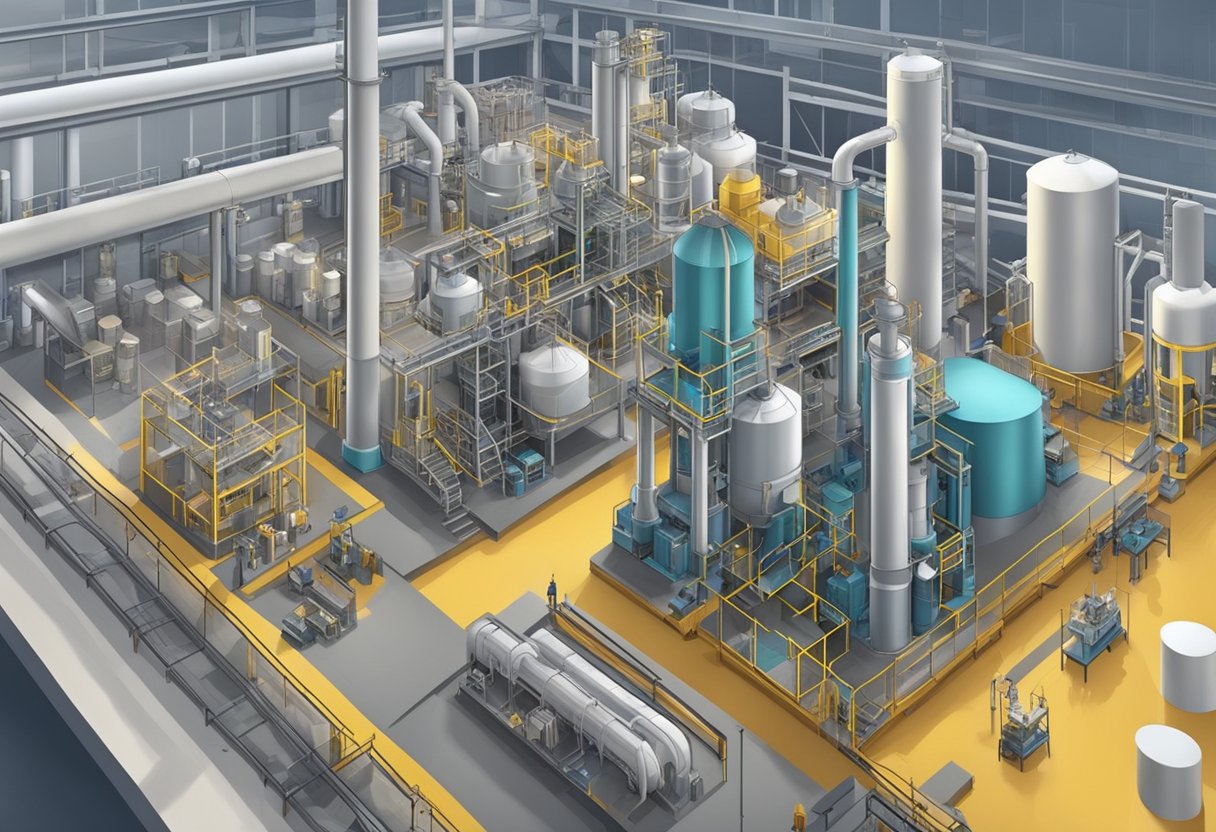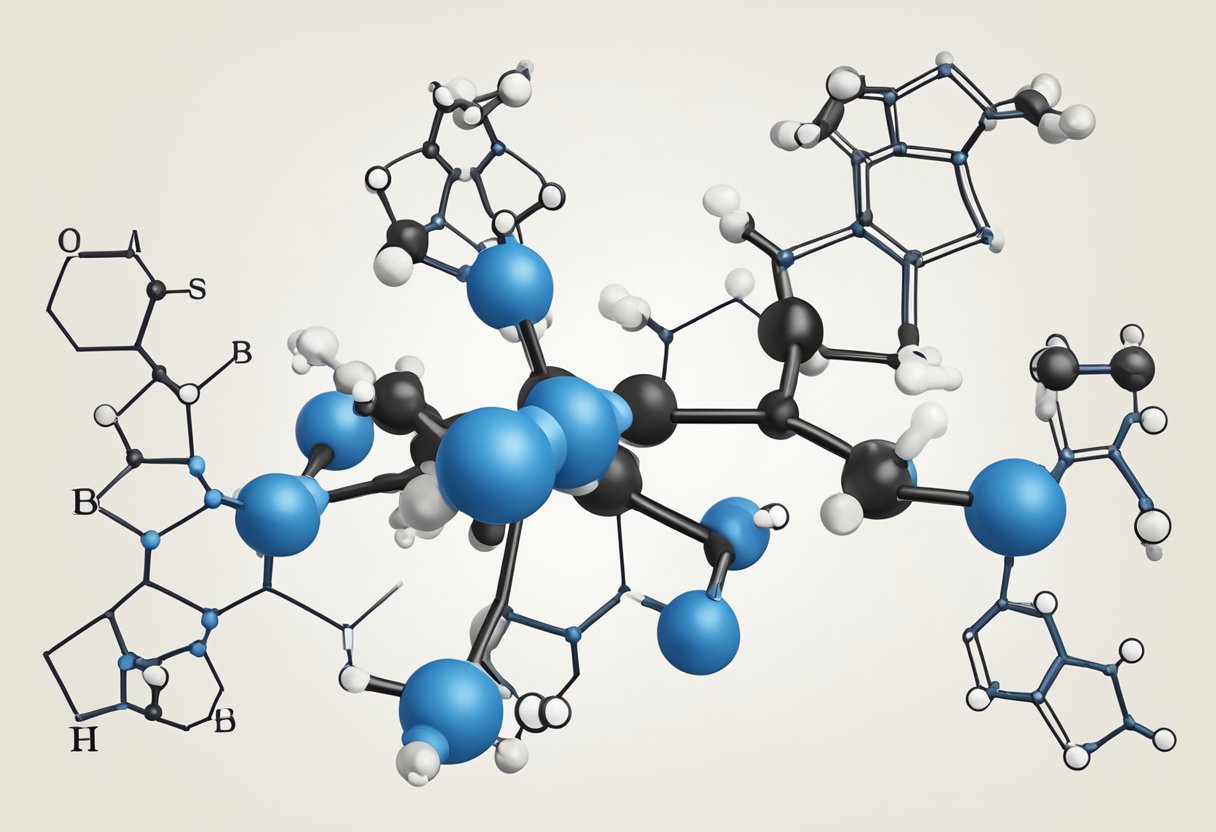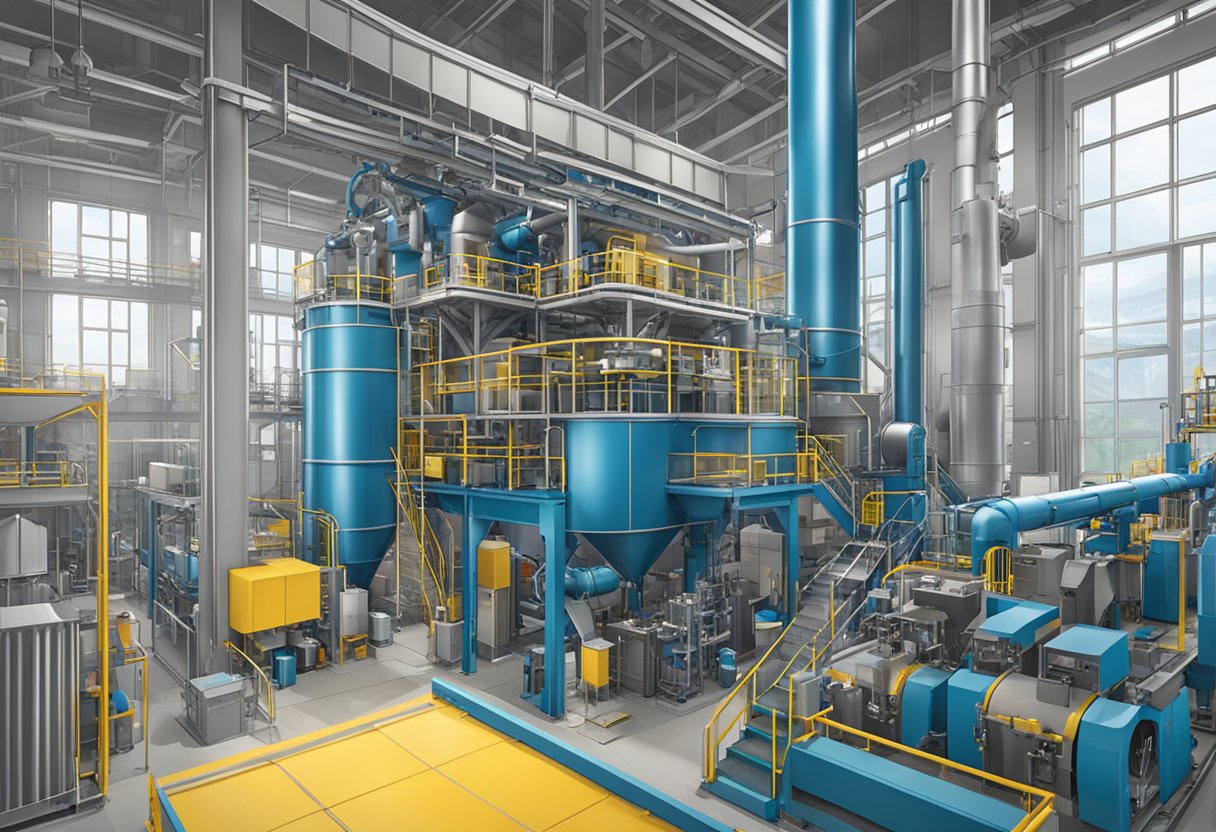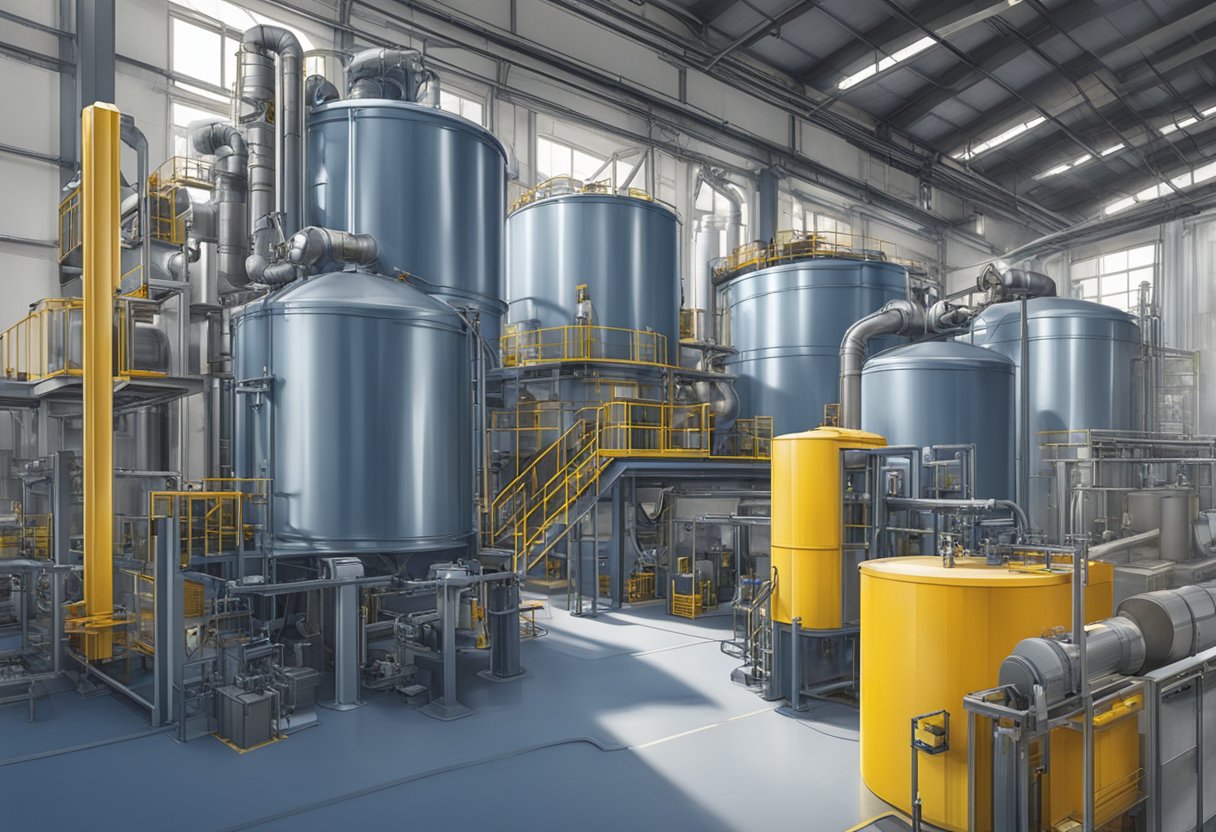Butadiene Rubber and Styrene Butadiene Rubber: A Comparison of Properties and Applications
19/01/2024
Butadiene rubber and styrene butadiene rubber are two types of synthetic rubber that are widely used in various industrial applications. Butadiene rubber, also known as polybutadiene, is a synthetic rubber made from the polymerization of butadiene. It is a highly elastic and durable material that is commonly used in the production of tires, conveyor belts, and other mechanical goods.

Styrene butadiene rubber, on the other hand, is a copolymer of styrene and butadiene. It is a versatile material that combines the properties of both styrene and butadiene, making it suitable for a wide range of applications. It is commonly used in the production of automobile parts, footwear, and adhesives, among other things.
Both butadiene rubber and styrene butadiene rubber are important materials in the rubber industry due to their unique properties and versatility. In this article, we will explore the characteristics of these two types of synthetic rubber, their applications, and their advantages and disadvantages.
Chemical Structure and Properties

Butadiene Rubber
Butadiene rubber, also known as polybutadiene, is a synthetic rubber made from the polymerization of butadiene monomers. The chemical structure of butadiene rubber consists of a long chain of polybutadiene molecules, which are composed of repeating units of butadiene.
Butadiene rubber has a high resistance to abrasion, tear, and wear, making it ideal for use in industrial applications such as tires, conveyor belts, and hoses. It also has excellent elasticity, low compression set, and good electrical insulation properties. However, it has poor resistance to ozone, sunlight, and oil, which limits its use in outdoor applications.
Styrene Butadiene Rubber
Styrene butadiene rubber, also known as SBR, is a synthetic rubber made from the polymerization of styrene and butadiene monomers. The chemical structure of SBR consists of a long chain of styrene-butadiene copolymer molecules, which are composed of repeating units of styrene and butadiene.
SBR has good abrasion resistance, high tensile strength, and excellent aging stability, making it suitable for use in a wide range of applications such as tire treads, shoe soles, and conveyor belts. It also has good resistance to water, heat, and chemicals. However, it has poor resistance to oil, ozone, and sunlight, which limits its use in certain applications.
Overall, both butadiene rubber and styrene butadiene rubber have unique chemical structures and properties that make them suitable for use in various industrial and commercial applications.
Production Processes

Polymerization Techniques
Butadiene rubber (BR) and styrene-butadiene rubber (SBR) are both produced through a process called emulsion polymerization. This process involves the use of an emulsifying agent to disperse the monomers in water, followed by the addition of a free radical initiator to initiate the polymerization reaction. The reaction takes place at a temperature of around 50-70°C and is typically carried out under pressure to increase the rate of polymerization.
The main difference between the polymerization techniques used for BR and SBR is the monomer composition. BR is produced by polymerizing butadiene alone, while SBR is produced by polymerizing a mixture of styrene and butadiene. The ratio of styrene to butadiene in the mixture can vary depending on the desired properties of the final product.
Post-Polymerization Treatments
After the polymerization reaction is complete, the resulting latex must be stabilized to prevent coagulation. This is typically done by adding a stabilizing agent such as a fatty acid or soap. The stabilized latex is then coagulated using an acid or salt solution to separate the rubber from the water.
The resulting rubber crumb is typically washed to remove any residual chemicals and then dried. At this point, the rubber can be further processed to improve its properties. For example, it can be blended with other materials to improve its strength or durability, or it can be vulcanized to make it more resistant to heat and wear.
Overall, the production processes for BR and SBR are similar, with the main difference being the monomer composition used in the polymerization reaction. Both materials are widely used in a variety of applications due to their excellent mechanical properties and resistance to wear and tear.
Applications

Automotive Industry
Butadiene rubber and styrene butadiene rubber are widely used in the automotive industry due to their excellent properties such as high abrasion resistance, good mechanical strength, and low-temperature flexibility. These rubbers are used in the production of various automotive components such as tires, belts, hoses, and seals. Butadiene rubber is particularly used in the production of tire treads due to its high abrasion resistance and good grip on wet roads. Styrene butadiene rubber, on the other hand, is used in the production of inner liners and sidewalls of tires due to its good mechanical strength and low-temperature flexibility.
Consumer Goods
Butadiene rubber and styrene butadiene rubber are also used in the production of various consumer goods such as footwear, toys, and sports equipment. These rubbers provide good durability, flexibility, and resistance to wear and tear. For instance, butadiene rubber is commonly used in the production of shoe soles due to its high abrasion resistance and good grip. Styrene butadiene rubber is used in the production of inflatable toys and sports balls due to its good air retention properties.
Industrial Products
Butadiene rubber and styrene butadiene rubber are also used in the production of various industrial products such as conveyor belts, hoses, and gaskets. These rubbers provide good resistance to abrasion, chemicals, and heat. Butadiene rubber is commonly used in the production of conveyor belts due to its high abrasion resistance and good grip. Styrene butadiene rubber is used in the production of hoses and gaskets due to its good resistance to chemicals and heat.
In summary, butadiene rubber and styrene butadiene rubber are versatile materials that find applications in various industries due to their excellent properties. They are particularly useful in the automotive industry, consumer goods, and industrial products.
Physical and Mechanical Properties
Elasticity and Strength
Butadiene rubber (BR) and styrene butadiene rubber (SBR) are known for their excellent elasticity and strength. Both types of rubber have a high tensile strength, which means they can withstand a large amount of stretching without breaking. BR has a slightly higher elasticity than SBR due to its higher cis-1,4 content, which gives it a more regular polymer structure. However, SBR has a higher resistance to abrasion, making it a better choice for tire treads.
Thermal Stability
One of the drawbacks of BR and SBR is their poor thermal stability. Both types of rubber begin to break down at temperatures above 100°C, which limits their use in high-temperature applications. However, SBR has better thermal stability than BR due to the presence of the styrene monomer, which helps to cross-link the polymer chains and increase their stability.
Resistance to Chemicals
BR and SBR are resistant to many chemicals, including acids, alkalis, and some organic solvents. However, they are not resistant to oils and fats, which can cause them to swell and lose their elasticity. SBR is more resistant to chemicals than BR, due to the presence of the styrene monomer, which makes the polymer chains more rigid and less susceptible to chemical attack.
In summary, BR and SBR are both excellent choices for applications that require high elasticity and strength, but they have limitations in terms of thermal stability and resistance to oils and fats. SBR is a better choice for applications that require good abrasion resistance and chemical resistance, while BR is a better choice for applications that require high elasticity.
Additives and Fillers
Butadiene rubber and styrene butadiene rubber can be modified with various additives and fillers to improve their properties and performance. Some of the commonly used additives and fillers are discussed below.
Reinforcing Agents
Reinforcing agents are added to rubber compounds to improve their strength, stiffness, and wear resistance. Carbon black is the most commonly used reinforcing agent for butadiene rubber and styrene butadiene rubber. It is a form of elemental carbon that is produced by the incomplete combustion of hydrocarbons. Carbon black particles are very small, typically less than 100 nm in size, and have a large surface area that provides a high degree of reinforcement. Other reinforcing agents that are used less frequently include silica, clay, and carbon fibers.
Plasticizers
Plasticizers are added to rubber compounds to improve their flexibility, low-temperature properties, and processability. Butadiene rubber and styrene butadiene rubber are typically not highly plasticized, as they have good low-temperature properties and are easy to process. However, small amounts of plasticizers such as oils, resins, and esters may be used to improve their flexibility in certain applications.
Antioxidants
Antioxidants are added to rubber compounds to prevent their degradation due to oxidation. Butadiene rubber and styrene butadiene rubber are susceptible to oxidation, which can cause them to become hard, brittle, and lose their properties over time. Various types of antioxidants are used, including phenols, amines, and phosphites. These antioxidants scavenge free radicals and other reactive species that are generated during the oxidation process, thereby preventing the chain reaction that leads to rubber degradation.
In addition to these additives and fillers, other materials such as curatives, accelerators, and processing aids may be used to modify the properties of butadiene rubber and styrene butadiene rubber. The choice and amount of these materials depend on the desired properties of the final product and the processing conditions used.
Environmental Impact and Sustainability
Biodegradability
Butadiene rubber and styrene butadiene rubber are not biodegradable. This means that they cannot be broken down by natural processes and will persist in the environment for a long time. As a result, these materials can contribute to pollution and environmental degradation if not properly disposed of.
Recycling and Reuse
Butadiene rubber and styrene butadiene rubber can be recycled and reused, which can help reduce their environmental impact. Recycling involves collecting used rubber products and processing them to create new products. Reuse involves finding new uses for rubber products that are no longer needed in their original form.
One of the challenges with recycling rubber is that it is difficult to separate the different types of rubber and contaminants that may be present. However, advances in technology have made it possible to recycle rubber more efficiently, and many companies are now incorporating recycled rubber into their products.
Another way to reduce the environmental impact of butadiene rubber and styrene butadiene rubber is to find new uses for them. For example, rubber can be used as a fuel source, or it can be turned into other materials such as asphalt. By finding new uses for rubber, we can reduce the amount of waste that ends up in landfills and minimize the need for new rubber production.
Overall, while butadiene rubber and styrene butadiene rubber are not biodegradable, they can be recycled and reused, which can help reduce their environmental impact. It is important for individuals and companies to properly dispose of rubber products and explore new ways to recycle and reuse rubber to minimize their impact on the environment.
Regulations and Standards
Health and Safety
Butadiene rubber and styrene butadiene rubber are widely used in various industries due to their excellent properties, but they also pose certain health and safety hazards. Therefore, several regulations and standards have been implemented to ensure the safe handling and use of these materials.
The Occupational Safety and Health Administration (OSHA) has set permissible exposure limits (PELs) for butadiene rubber and styrene butadiene rubber. The PEL for butadiene rubber is 1 ppm (parts per million) over an 8-hour workday, while the PEL for styrene butadiene rubber is 50 ppm over an 8-hour workday. Employers are required to provide appropriate personal protective equipment (PPE) to their employees and ensure that they are properly trained on the safe handling and use of these materials.
In addition, the European Union has implemented the Registration, Evaluation, Authorization and Restriction of Chemicals (REACH) regulation, which requires companies to register and provide information on the properties and uses of their chemicals. This regulation aims to ensure the safe use of chemicals and protect human health and the environment.
Quality Control
To ensure the quality and consistency of butadiene rubber and styrene butadiene rubber, several standards have been established. The American Society for Testing and Materials (ASTM) has developed several standards for these materials, including ASTM D1418 for butadiene rubber and ASTM D2000 for styrene butadiene rubber. These standards specify the requirements for the physical and chemical properties of these materials, as well as the test methods used to determine these properties.
The International Organization for Standardization (ISO) has also developed several standards for rubber, including ISO 1629 for butadiene rubber and ISO 1628 for styrene butadiene rubbers. These standards provide guidance on the classification and designation of these materials based on their properties and composition.
Overall, compliance with these regulations and standards is essential to ensure the safe handling and use of butadiene rubbers and styrene butadiene rubbersas well as to ensure the quality and consistency of these materials.
Market Trends and Economic Aspects
Supply and Demand
Butadiene rubbers and styrene butadiene rubbers are widely used in the automotive industry, construction, and consumer goods. The global demand for butadiene rubbers and styrene butadiene rubbers is expected to increase in the coming years due to the growth of the automotive industry in emerging economies such as China and India.
The supply of butadiene rubbers and styrene butadiene rubbers is largely dependent on the availability of butadiene, which is a by-product of ethylene production. The prices of butadiene rubbers and styrene butadiene rubber are highly influenced by the supply and demand of butadiene.
Price Fluctuations
The prices of butadiene rubbers and styrene butadiene rubbers are subject to fluctuations due to various factors such as changes in raw material prices, supply and demand dynamics, and geopolitical events. In recent years, the prices of butadiene rubbers and styrene butadiene rubbers have been volatile due to the impact of the COVID-19 pandemic on the global economy.
The price of butadiene rubbers and styrene butadiene rubbers is also affected by the price of crude oil, which is a major raw material used in their production. Any fluctuations in the price of crude oil can have a significant impact on the price of butadiene rubbers and styrene butadiene rubbers.
In conclusion, the market trends and economic aspects of butadiene rubbers and styrene butadiene rubbers are largely influenced by the supply and demand dynamics of butadiene, the major raw material used in their production. The prices of these rubbers are subject to fluctuations due to various factors, and it is important for manufacturers to keep a close eye on these trends to remain competitive in the market.
Research and Development
Innovations
Butadiene rubber and styrene butadienes rubbershave been subject to extensive research and development in recent years. One of the major innovations in the production of these rubbers has been the development of new catalysts that allow for more efficient and cost-effective production processes. These catalysts have been shown to increase the yield of butadiene and styrene butadiene rubbers production, while also reducing the amount of waste generated during the process.
Another important innovation in the field of butadiene rubber and styrene butadiene rubbers research has been the development of new blends and formulations. Researchers have been able to create new blends of butadiene rubber with other materials, such as natural rubber and polyethylene, which offer improved mechanical properties, such as increased tensile strength and abrasion resistance. Similarly, new formulations of styrene butadiene rubberS have been developed that offer improved properties, such as increased oil and heat resistance.
Future Prospects
Looking forward, there are several areas of research that hold promise for the future of butadiene rubber and styrene butadiene rubberS. One such area is the development of new sustainable production methods. Researchers are exploring the use of renewable feedstocks, such as biomass and waste products, as a source of raw materials for the production of butadiene and styrene butadiene rubberS. This could help to reduce the environmental impact of the rubber industry, while also improving the sustainability of the production process.
Another promising area of research is the development of new applications for butadiene rubbers and styrene butadiene rubberS. These materials have a wide range of potential uses, from automotive and construction applications to consumer goods and medical devices. As new formulations and blends are developed, it is likely that the range of potential applications for these materials will continue to expand.
Overall, the future of butadiene rubbers and styrene butadiene rubberS looks bright, with continued innovation and development expected to drive new advances in the field.
Comparative Analysis
Butadiene Rubber vs. Styrene Butadiene Rubber
Butadiene rubbers (BR) and styrene butadiene rubberS (SBR) are two of the most commonly used synthetic rubbers. While both rubbers are made from butadiene, they differ in their composition. BR is a homopolymer, which means it is made from a single monomer, while SBR is a copolymer, which means it is made from two different monomers, butadiene and styrene.
One of the main differences between BR and SBR is their physical properties. BR has a lower glass transition temperature (Tg) than SBR, which means it is more flexible at low temperatures. However, SBR has better abrasion resistance and is more resistant to aging and weathering than BR.
Another major difference between BR and SBR is their cost. BR is generally more expensive than SBR, which makes SBR a more popular choice for a wide range of applications. However, BR is still preferred for certain applications where its unique properties are required, such as in the production of high-performance tires.
Other Synthetic Rubbers
In addition to BR and SBR, there are many other types of synthetic rubbers available. Some of the most common types include neoprene, nitrile rubber, and EPDM rubber. Each of these rubbers has its own unique properties and is used in a variety of different applications.
Neoprene, for example, is known for its excellent resistance to oil, chemicals, and weathering, which makes it a popular choice for gaskets, hoses, and other industrial applications. Nitrile rubber, on the other hand, is known for its excellent resistance to oil and fuel, which makes it a popular choice for automotive applications. Finally, EPDM rubber is known for its excellent resistance to heat, ozone, and weathering, which makes it a popular choice for roofing and other outdoor applications.




